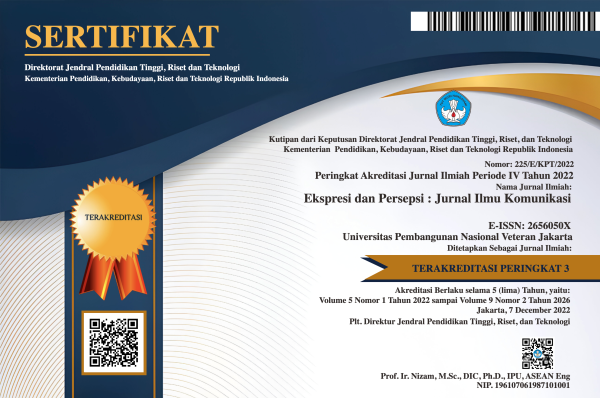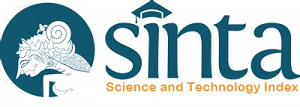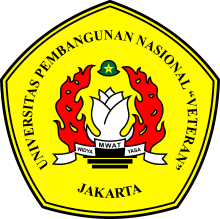TikTok Effect: Study Of Citayam Fashion Week
DOI:
https://doi.org/10.33822/jep.v7i1.6406Keywords:
citayam fashion week, content analysis, economic media, social class, tiktokAbstract
This study looks into how TikTok mediated the activities of its users in exploring fashion hobbies, particularly in the street event known as Citayam Fashion Week (CFW). Previous studies looked into TikTok as a social media used for various purposes, including health information platforms, promotion channels, and education resources. This study aims to provide a distinct point of view of TikTok, specifically in the Indonesian context, by looking into TikTok as a social space for people from diverse backgrounds. Further, this study also will investigate how TikTok mediated its users to express their interests or hobbies, and how the fact will impact their social life. In doing so, I employ qualitative content analysis to examine online materials related to CFW. It includes videos uploaded on online platforms such as YouTube, TikTok, or mainstream media outlets. This study found that TikTok dissolves the boundaries between social classes. TikTok users from different backgrounds could express their ideas without the necessity of specific requirements. In addition, TikTok also economically affects people involved in its content, either actors on the TikTok video or people behind the scenes.
References
Abidin, C. (2020). Mapping Internet Celebrity on TikTok: Exploring Attention Economies and Visibility Labours. Cultural Science Journal, 12(1), 77–103. https://doi.org/10.5334/csci.140
Burris, V. (1987). The Neo-Marxist synthesis of Marx and Weber on class. In N. Wiley (Ed.), The Marx-Weber Debate (pp. 67–90). Sage Publication.
Chen, J., & Wang, Y. (2021, May 1). Social media use for health purposes: Systematic review. Journal of Medical Internet Research, Vol. 23. https://doi.org/10.2196/17917
Granrot, L., Knutsson, K., & Moller, J. (2008). The Devil wears Monclear: A study of #MONCLERBUBBLEUP on TikTok (Vol. 19). https://doi.org/10.1177/0956474808090197
Haenlein, M., Anadol, E., Farnsworth, T., Hugo, H., Hunichen, J., & Welte, D. (2020). Navigating the New Era of Influencer Marketing: How to be Successful on Instagram, TikTok, & Co. California Management Review, 63(1), 5–25. https://doi.org/10.1177/0008125620958166
Ignatow, G., & Robinson, L. (2017). Pierre Bourdieu : theorizing the digital. Information, Communication & Society, 20(7), 950–966. https://doi.org/10.1080/1369118X.2017.1301519
Koetsier, J. (2021). Top 10 Most Downloaded Apps And Games Of 2021: TikTok, Telegram Big Winners. Retrieved August 8, 2022, from Forbes website: https://www.forbes.com/sites/johnkoetsier/2021/12/27/top-10-most-downloaded-apps-and-games-of-2021-tiktok-telegram-big-winners/?sh=3f34ceeb3a1f
Kvasny, L., & Keil, M. (2006). The challenges of redressing the digital divide: a tale of two US cities Cite this paper. Information Systems Journal, 16, 23–53.
Levina, N., & Arriaga, M. (2014). Distinction and status production on user-generated content platforms: Using Bourdieu's theory of cultural production to understand social dynamics in online fields. Information Systems Research, 25(3), 468–488. https://doi.org/10.1287/isre.2014.0535
Ling, C., Blackburn, J., De Cristofaro, E., & Stringhini, G. (2022). Slapping Cats, Bopping Heads, and Oreo Shakes: Understanding Indicators of Virality in TikTok Short Videos. 14th ACM Web Science Conference 2022, 164–173. https://doi.org/10.1145/3501247.3531551
Micheli, M. (2015). What is New in the Digital Divide? Understanding Internet Use by Teenagers from Different Social Backgrounds. In Communication and Information Technologies Annual: Digital Distinctions and Inequalities (Vol. 10, pp. 55–87). https://doi.org/10.1108/s2050-206020150000010003
Oklander, M., & Kudina, A. (2021). Channels For Promotion of Fashion Brands In The Online Space. Baltic Journal Of Economic Studies, 7(2), 179–187.
Rizaty, M. A. (2021). Pengguna TikTok Indonesia Terbesar Kedua di Duni. Retrieved August 14, 2022, from www.dataindonesia.id website: https://dataindonesia.id/digital/detail/pengguna-tiktok-indonesia-terbesar-kedua-di-dunia
Vizcaíno-Verdú, A., & Abidin, C. (2022). Music Challenge Memes on TikTok: Understanding In-Group Storytelling Videos. International Journal of Communication, 16, 883–908.
Wang, Y., Luo, Q., Hao, Y., Guo, Y., & Li, Y. (2021). Analysis from Competitor' s Perspective : Comparing the Opportunities and Risks of Using TikTok in LEGO' s Digital Marketing.
Willman, O. (2021). TikTok As a Tool for International Growth in The Fashion Industry – Case Study for House of Halla Oy. Haaga-Helia University of Applied Sciences.
Yang, H. (2020). Secondary-school students' perspectives of utilizing tiktok for English learning in and beyond the EFL classroom. 2020 3rd International Conference on EducationTechnology and Social Science (ETSS 2020), (Etss), 162–183.
Yates, S., & Lockley, E. (2018). Social Media and Social Class. American Behavioral Scientist, 62(9), 1291–1316. https://doi.org/10.1177/0002764218773821
Yélamos-Guerra, M. S., García-Gámez, M., & Moreno-Ortiz, A. J. (2022). The use of Tik Tok in higher education as a motivating source for students. Porta Linguarum Revista Interuniversitaria de Didáctica de Las Lenguas Extranjeras, (38), 83–98. https://doi.org/10.30827/portalin.vi38.21684
Zhang, W., Mei, J., Song, W., Evans, R., & Xiang, Y. (2021). Why Do Citizens Engage With the TikTok Accounts of Public Hospitals in China? SAGE Open, 11(4). https://doi.org/10.1177/21582440211061568
Zhu, C., Xu, X., Zhang, W., Chen, J., & Evans, R. (2020). How health communication via tik tok makes a difference: A content analysis of tik tok accounts run by Chinese provincial health committees. International Journal of Environmental Research and Public Health, 17(1). https://doi.org/10.3390/ijerph17010192
Zillien, N., & Marr, M. (2013). The Digital Divide in Europe. In The Digital Divide (pp. 55–66).
Downloads
Published
Issue
Section
License
Copyright (c) 2024 Advan Navis Zubaidi

This work is licensed under a Creative Commons Attribution-NonCommercial 4.0 International License.














